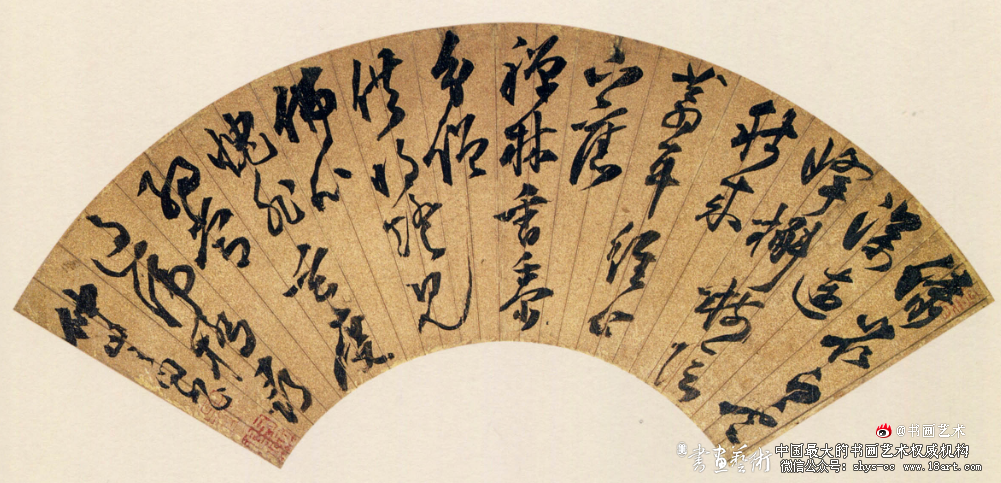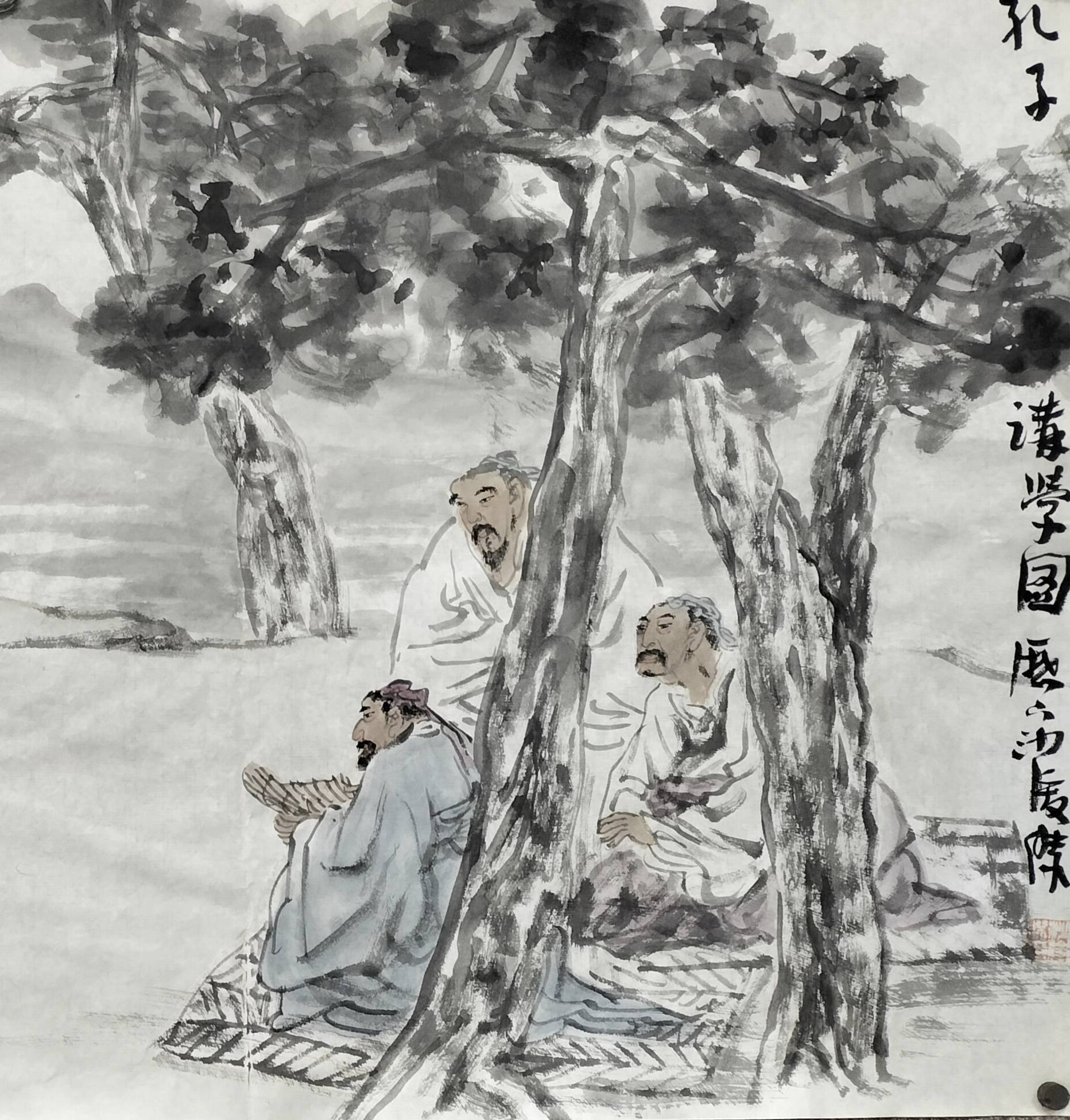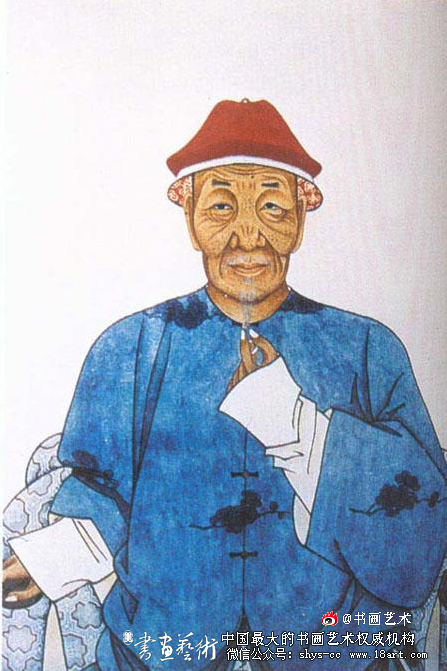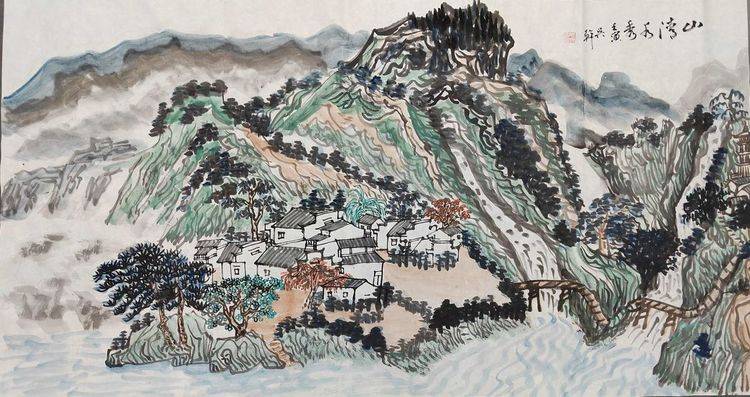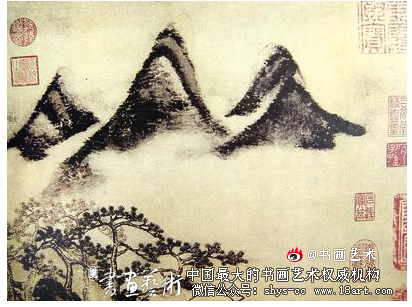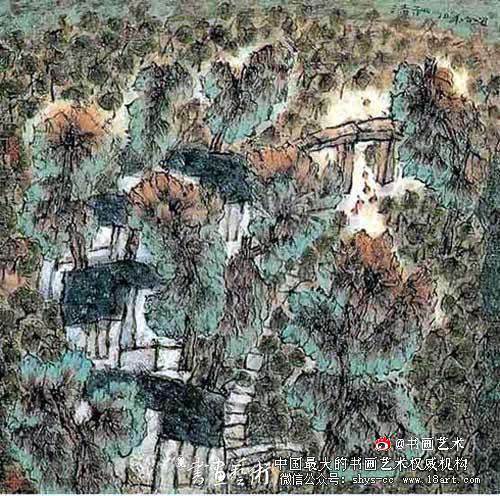书画艺术:王问草书七言古风卷
大家好,唐朝的开放与国际化的关系「唐朝的开放与包容」很多人还不知道,现在让我们一起来看看吧!
唐朝的开放与国际化
(Learn to spread China and Chinese cuIture in EngIish)
The Openness and Internationlization of the Tang Dynasty
"Is it not a pleasure to meet friends from afar?" The prosperous Tang Dynasty best exemplified the open and inclusive spirit of Chinese culture as advocated by Confucius. Instead of denial or confrontation, the Tang, from the reign of Emperor Taizong onwards, tolerated and absorbed elements from all cultures that it came into contact with, leading to prosperity in all aspects of social life.
Both the Tang and the preceding Sui Dynasty (581-618) presented large-scale song and dance performances at court banquets and ceremonies.The Sui had a nine-section musical symphony (交响乐), and the Tang added one More section for such occasions. Besides Han music and Xinjiang regional music, both the nine-part and the ten-part musical works included elements from foreign cultures,including India, Myanmar and Cambodia. Love for music from other lands was prevalent not only among the imperial family and the nobility, but also among the common people. Such an open attitude toward international arts was responsible for the flourishing of all forms of the arts during the Tang Dynasty.
Nestorianism, a branch of Christianity, was introduced into China during the reign of Emperor Taizong. Emperor Taizong appointed Prime Minister Fang Xuanling (579-648) to welcome them and assigned the imperial library to them to translate their religious scriptures.The government even provided funds for the newcomers to build a church in the capital city.Two other religions, Zoroastrianism (琐罗亚斯德教,古代波斯帝国的国教)and Manichaeism(摩尼教,三世纪波斯人摩尼所创) were also introduced into China during the Tang Dynasty. Empress Wu, who ruled the Tang Empire from 690 to 705,approved the teachings of Manichaeism as well.Not only did the Tang Empire open its doors to overseas friends and embrace foreign cultures, many of its people also went abroad to study local cultures. Xuanzang (602.664) and Yijing(635-713), both great Buddhist masters, were two of the most outstanding examples .Xuanzang left China for South Asia in 627, and returned to Chang’an in 645. During those 17 years, he visited and studied Buddhism in more than 100 small states in the Western Regions and in and around what is now South Asia. He brought home 657 sets of Buddhist. The 12-volume Tang-dynasty Records of the Western Regions recounted what Xuanzang had experienced or heard about in the 138 countries or states in the Western Regions, including their geography, transport, climate,products, peoples, languages, history, religions, politics, economies, cultures, and customs.Contemporary scholars today regard the book as a rare reference for the study of South Asian history and philosophy, as well as religious and literary history.
Yijing also traveled to South Asia to study Buddhism, but he took the sea route. He left Guangzhou (capital of today's Guangdong Province) in 671, and traveled through Sumatra to arrive in India. He brought back 400 sets of Buddhist scriptures. Empress Wu came out of her palace to welcome Yijing with a splendid ceremony. Later Emperor Zhongzong(r. 705-710) set up a translation institute for Yijing at the Dajianfu Temple (大荐福寺) in Chang’an. As many as 83 translators worked for 16 years, to accomplish the translationof 56 scriptures in 230 volumes. Such a large-scale and high-level translation team is strong evidence of the Tang Empire's openness to
foreign cultures.
The Tang capital Chang’an was probably the largest metropolis(大都会) in the world at the time. It ran nearly 10,000 meters from east to west, and more than 8,000 meters from north to south. More than a milion people lived in the 84-square kilometer city, 200,000 more than the population of Constantinople, then capial of the Byatine Empire.
Its open and inclusive attitude toward foreign cultures enablel Chang’an to develop into the most prosperous international metropolis in the world of the time. Foreign envoys, merchant,and students were a common sight in the city. The HongluTemple(鸿胪寺) received envoys from more than 70 countries, most coming in large groups. Japan, Silla (Korea), and Tazi (including today's Syria, Kuwait, Iraq, and Libya) were the countries that dispatched the largest numbers of envoys to China. Japan sent more than ten delegations of envoys to the Tang, with delegates from all walks of life, including students, scholar-monks, craftspeople, and specialists in different fields. Every delegation consisted of several hundred people, the largest group numbering as many as 800. One to two hundred students from Silla studied regularly in Chang'an. According to Old Records of the Tang Dynasty (《旧唐书》), in the year 837 there were 216 students from Silla in Chang’an.
Both aristocrats (贵族) and the common people were keen on foreign apparel (服饰) ,foods and customs, with "Minority Folk Fashions" highly popular in Chang’an. "Minority Fashions" referred to attire (服装) from the Western Regions and some lands in what is today's Uzbekistan. The capes that Tang women enjoyed wearing were introduced from India. Polo, popular during theTang, was originally a Persian sport. It was first introduced into Turkey and India, and then into China. Many merchants from Central Asia and West Asia ran wine shops, jewelry shops, and sundry stores in Chang’an. Their wine shops attracted customers not only due to their famed wines but also because of the beautiful chorus girls from the Western Regions.
These popular practices of adopting outside styles and customs represented the youthful dynamism of the Tang Dynasty, garnering (获得) high admiration from scholars of later generations.
唐朝的开放与国际化
“有朋自远方来,不亦乐乎?”繁荣昌盛的唐朝最能体现孔子倡导的开放包容的中国文化精神。自唐太宗统治以来,唐朝对它所能接触到的所有文化元素,既不排斥也不对抗,而是采取兼容并蓄的态度,并最终导致社会生活各个方面出现了欣欣向荣的美好景象。
唐朝和隋朝(581-618)都在宫廷宴会和仪式上进行了大规模的歌舞表演。隋朝时的九部交响乐, 到唐朝又增加了一部成为十部乐。除了汉族音乐和新疆地区音乐,九部和十部音乐作品还包含了来自印度、缅甸和柬埔寨等外国文化的元素。对其他国家音乐的热爱不仅在皇室和贵族中普遍存在,而且在普通民众中也相当普遍。这种对国际艺术的开放态度导致了唐代各种艺术形式的百花齐放。
景教是基督教的一个分支,在唐太宗统治时期传入中国。唐太宗任命丞相房玄龄(579-648)迎按他们,并指派皇家图书馆翻译他们的宗教经文。政府甚至为新来者提供资金,在首都修建教堂。另外两种宗教,琐罗亚斯德教和摩尼教,也在唐代传入中国。从690年到705年统治唐朝的武则天也赞同摩尼教的教义。
唐朝不仅向海外朋友敞开大门,拥抱外国文化,许多人还出国学习当地文化。两个伟大的佛教大师玄奘(602—664)和义净(635-713),便是最杰出的例子。玄奘于627年离开中国前往南亚,于645年返回长安。在这17年中,他访问并研究了西方地区100多个小国以及现在的南亚及其周边地区的佛教。他带回了657套佛经。《大唐西域记》共12卷,记述了玄奘在西域138个国家或州县的经历或听闻,包括其地理、交通、气候、产品、民族、语言、历史、宗教、政治、经济、文化和风俗。今天,当代学者认为这本书是研究南亚历史和哲学以及宗教和文学史的罕见参考。
义净也曾前往南亚学习佛教,但他选择了海路。他于671年离开广州(今天的广东省省会),途经苏门答腊岛抵达印度。他带回了400套佛经。武则天走出皇宫,亲自举行盛大欢迎仪式义净。后来的中宗皇帝(公元705-710年)在长安大荐福寺设立了一所义净翻译机构。多达83名翻译人员工作了16年,完成了230卷56部经文的翻译。如此大规模和高水平的翻译团队有力地证明了唐朝对外国文化的开放程度。
唐都长安可能是当时世界上最大的大都会。从东到西近10000米,从北到南达8000多米。这座84平方公里的城市居住着100多万人,比当时的拜占庭帝国首都君士坦丁堡的人口多20万。
对外来文化的开放和包容态度使长安发展成为当时世界上最繁荣的国际大都市。外国使节、商人和学生在这座城市随处可见。鸿胪寺接待了来自70多个国家的使节,其中大多数是组团而来的。日本、新罗(韩国)和塔齐(包括今天的叙利亚、科威特、伊拉克和利比亚)是向中国派遣使节最多的国家。日本向唐朝派出了十余个使节代表团,代表来自各行各业,包括学生、学者僧侣、工匠和不同领域的专家。每个代表团由数百人组成,最大的一个团队多达800人。来自新罗的一到两百名学生定期在长安学习。根据《旧唐书》记载, 837年,长安有216名新罗留学生。
贵族和老百姓都热衷于外国服饰、饮食及风俗。“少数民族风情”在长安盛极一时。“少数民族风情”指的是来自西域和今天的乌兹别克斯坦的一些服饰。唐代女性喜欢穿的披肩是从印度引进的。马球运动最初是波斯的一项运动,首先传入土耳其和印度,然后传入中国,并在唐代流行起来。 许多中亚和西亚商人在长安经营着葡萄酒店、珠宝店和杂货店。他们的葡萄酒店吸引顾客不仅是因为他们的名酒,还因为有来自西域的合唱美女。
这些来自异国他乡的外来风情,使唐代充满了蓬勃的生机和活力,获得了后世学者的高度赞赏。
声明:本资料根据外语教学与研究出版社出版张桂萍编著的《中国文化英语教程》汇编而成。如有侵权,联系删除。

